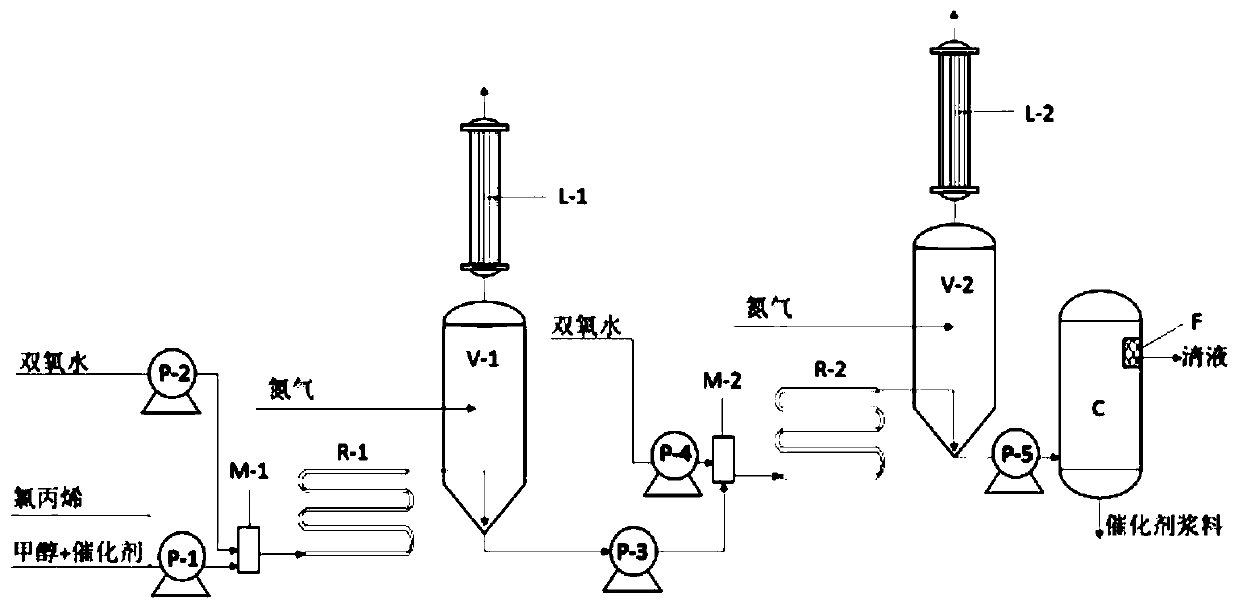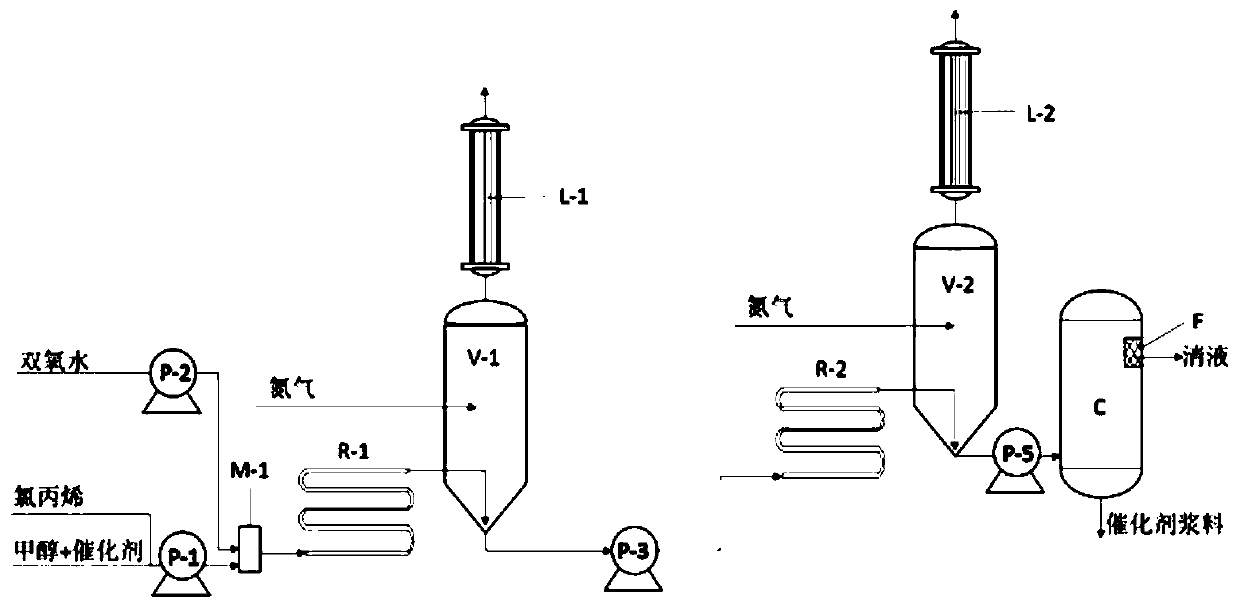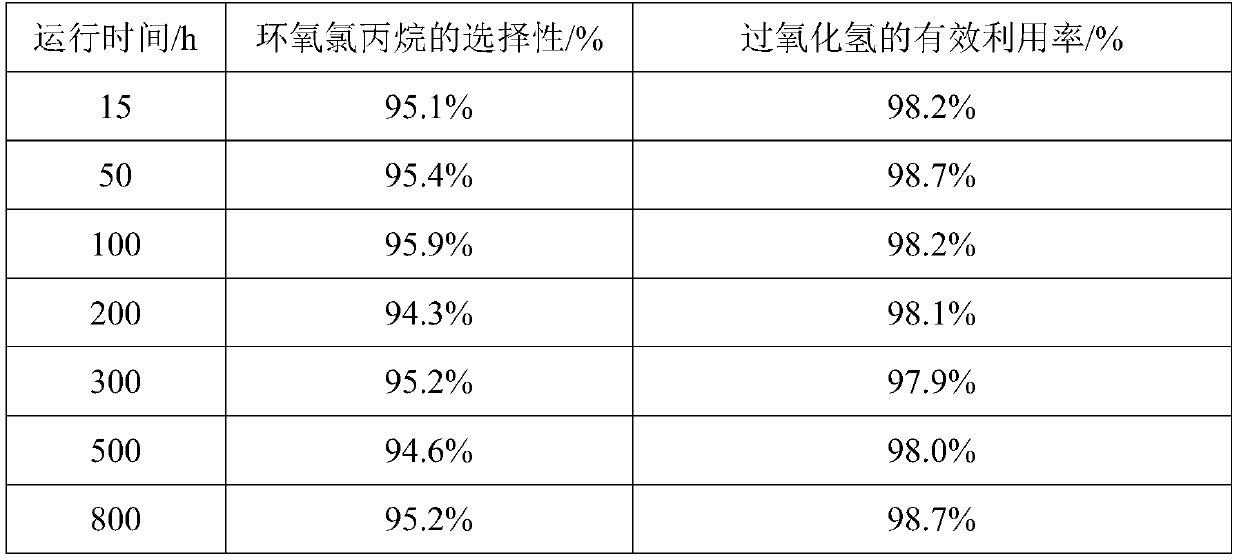Process for producing epoxy chloropropane through direct oxidization with titanium silicalite molecular sieve catalyst
A technology of epichlorohydrin and hydrogen peroxide, which is applied in the direction of organic chemistry, can solve the problems of difficult catalyst separation and recovery, heavy process equipment load, and low effective utilization rate of hydrogen peroxide, so as to improve the effective utilization rate and reduce production cost, effect of increasing reaction safety
- Summary
- Abstract
- Description
- Claims
- Application Information
AI Technical Summary
Problems solved by technology
Method used
Image
Examples
Embodiment 1
[0058] according to figure 1 The epichlorohydrin production process shown.
[0059] There are two tubular reactors, both of which are equipped with heat exchange jackets, so that the heat generated by the reaction can be exchanged and taken away; the front of the two tubular reactors is equipped with a mixer , so that the raw materials are fully mixed; there are reflux condensers at the top of the two separators.
[0060] Put fresh chloropropene and methanol with catalyst into the first mixer M-1 through the metering pump P-1, mix with the hydrogen peroxide injected into the first mixer M-1 through the metering pump P-2, mix well and then transport To the first tubular reactor R-1 for reaction. The mass ratio of methanol and allyl chloride is 1:1, the molar number of hydrogen peroxide in the hydrogen peroxide is 1 / 6 of that of allyl chloride, the mass concentration of hydrogen peroxide is 50%, and the weight solid content of the catalyst is 10%. Additive Na 2 CO 3 The dos...
PUM
| Property | Measurement | Unit |
|---|---|---|
| length | aaaaa | aaaaa |
| porosity | aaaaa | aaaaa |
Abstract
Description
Claims
Application Information
 Login to View More
Login to View More - R&D
- Intellectual Property
- Life Sciences
- Materials
- Tech Scout
- Unparalleled Data Quality
- Higher Quality Content
- 60% Fewer Hallucinations
Browse by: Latest US Patents, China's latest patents, Technical Efficacy Thesaurus, Application Domain, Technology Topic, Popular Technical Reports.
© 2025 PatSnap. All rights reserved.Legal|Privacy policy|Modern Slavery Act Transparency Statement|Sitemap|About US| Contact US: help@patsnap.com



